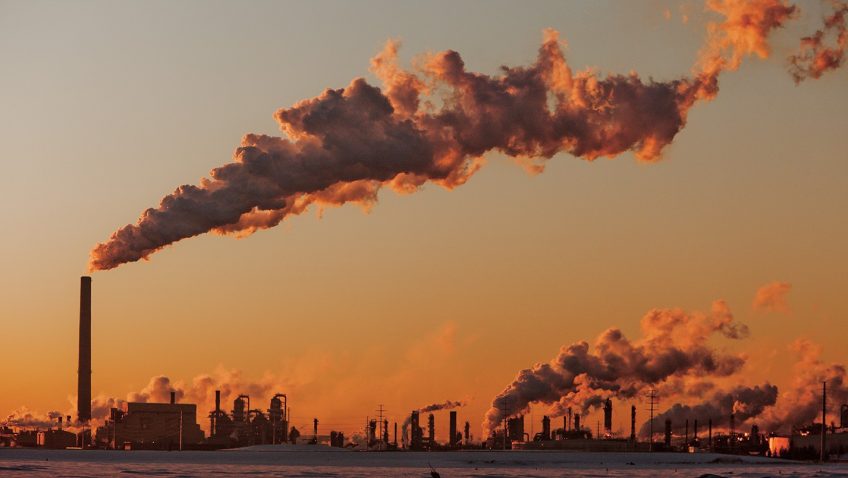Last October, Ecuadorian President LenÍn Moreno had a first-hand experience of the social trouble resulting from change in energy policies. To respect the IMF’s structural adjustment plan in order to obtain another loan, Moreno decided to scrap the country’s fuel energy subsidies, which amounted to nearly $1.5 billion per year. Eleven days of violent protest later, the measure was put aside to prevent further anger over the resulting 30% increase in the price of fuel. The Ecuadorian upheaval is a sign of a dependence on fossil fuels as much as of the inability to incrementally transition towards a green economy.
It has not been the only setback in this regard in recent years. For example, the OECD and International Energy Agency have been trying to provide data on the global trend for different forms of fossil fuel. After a relative decline between 2012 and 2016, 2017 saw the curve getting steeper, with pre-tax oil subsidies greatly contributing to the increase. Even more dramatically, there is little progress in taxing the greenhouse gas emissions that the subsidised production emits, making the Paris Agreement commitments a faint hope. Overall, one has the feeling that the green economy is a political chimera appearing all of a sudden in the public discourse, whose development is all but carefully planned.
Excessive reliance
Fossil fuel subsidies are meant to incentivise domestic energy sources and lower production costs for the fossil fuel industry. Direct subsidies and indirect tax benefits are the most common way to implement that. In countries like the United States, master limited partnerships have even been created to justify tax exemptions for companies operating in the energy sector. In 2015 alone, the US spent 649 billion dollars in subsidies, despite a decreasing cost-effectiveness and the reduced price of renewable energy production.
Similarly, the European Commission invested 55 billion euros in subsidies between 2014 and 2016, which clearly contradicts the optimist ambition used in answers to parliamentary questions on this matter. Making things worse is the decision to introduce new subsidies by five EU countries – UK, Poland, Germany, Greece, and Slovenia -, which has been denounced by European NGOs last September.
An important issue lies at the core of the current discussion, and it is the incoherence of the rationale backing it up. In fact, it seems that the pro-poor argument to defend subsidies is falling apart as the first signs of the climate catastrophe become visible. For decades, subsidisation was seen as a way to provide energy to low-income households, in what development experts have defined as “supply reliability”. However, the system in place favours energy whose production is inherently damaging to the environment, and which will further a degradation process which overwhelmingly affects the poorest areas in the world.
Sustained funding
1.3 billion people in developing countries have no access to electricity, let alone to renewable energy, which is in itself a symptom of a failed rhetoric on adaptation and mitigation. Even more so is the fact that 60% of public aid for energy projects, which is sent from developed countries to developing countries, is invested in fossil fuels. The Ecuador shock proves a valid point: subsidies increase dependence, by ensuring that one, and only one source of energy is sheltered from competition. When those resources are fully depleted, it is difficult to imagine the extent of the upcoming crisis on the social classes who have the least income to purchase other options for themselves.
It is even more difficult to justify subsidies among developed countries, when the evidence shows their negative impact on the COP21 objectives. Carbon pricing schemes, of which Canada is a big promoter, have so far managed to cover up for 11% of worldwide emissions. And yet, consumption fossil fuel subsidies cover 13% of total emissions. In the Canadian case in 2015, they amounted to 3.3 billion Canadian dollars annually. Environmental costs remain a contentious object of calculation, in comparison to reducing the costs of supplying some form of energy. Considering that post-tax subsidies have been steadily on the rise, according to IMF statistics, shows the unwillingness to plan out a long-term resolution – let alone at a critical juncture for the climate crisis.
The science is out there to support the swap, with studies showing that giving up on subsidies would trigger a 25% reduction in the emission targets agreed during COP21. The politics are not there yet. If Ecuador seems distant, the Yellow Vest movement in France suggests that welfare measures and compensations should be in place before this urgent move is carried out for the sake of the planet. Paradoxically, 10% of current subsidy cash could fund the transition we need so desperately. It is a matter of promoting change as a gradual, essential trend that benefits every single person in some way. Unless we put people at its centre, including through social subsidies, there is no way that will be a smooth ride.








